When we talk about Buddhism and Christianity, we tend to emphasize the differences.
Discovering differences is also essential to understanding different civilizations. However, on the other hand, as we enter the space age, I believe that it will be important to explore basic commonalities that transcend differences in order to build a civilization based on the unit of “Earth.”
As we often say on this site (Neo Buddhism), at least if we look at the unit of “earth”, there is only one absolute God.
A single God manifests itself in different ways depending on the region and era. Or, if you look at it from the human side, it’s just a different way of understanding (response).
These ideas are in line with John Hick’s “religious pluralism.”
Alternatively, it can be viewed as a greatly scaled-up ecumenical (ecclesiastical unity) movement.
In this paper, for the time being, I would like to present a basic theory that synthesizes Christianity and Buddhism by dividing them into ‘God theory, ‘Christ theory’, ‘human theory’, and ‘monastic theory’ in line with Christian theology.
God theory
God theory is the most basic concept to understand the religion.
Here, we will explore the points of contact between “God and Vairocana Buddha / Amida Nyorai” while considering the following three points.
- World Creation or Self-Development
- Transcendence or Immanence
- “Pre-Dharma and Post-Buddha” or “Pre-God and Post-Teachings”
World Creation or Self-Development
First Cause of “Earth” Estimated by Causal Time Series
In Christianity (Semitic monotheism), there is a tendency to emphasize the absoluteness of God from the point that “God created the world.”
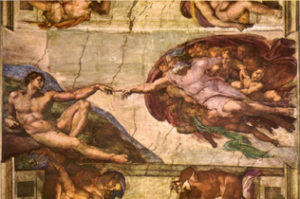
Michelangelo’s “Creation” on the ceiling of the Sistine Chapel
Buddhism, on the other hand, does not talk about the creation of the world.
This is why it is said that Buddhism and Christianity are completely different.
But is it so fundamental in theology whether the creation of the world is preached? It seems to me that we need to go back to a blank slate and think again.
The basis of generative theory in Buddhism is “dependence”. To put it bluntly, it’s the “Law of Cause and Effect” (in terms of time).
Suppose A is the cause, and B is the effect. Then B becomes one cause, and the next effect, C, is brought about.
B is the “effect” from A’s point of view, but is the “cause” from C’s point of view. That’s how the world unfolds.
If so, no matter how far you go, it seems that you will not be able to hit the first cause of “world creation”.
But what is the “first cause” anyway?
What the Bible talks about is not the creation of the entire universe, but is limited to the creation of the earth and the magnetic field centered on the earth.
So God made the two larger lights, the sun to rule over the day and the moon to rule over the night; he also made the stars.[Genesis 1:16]
In this verse, rather than generalizing or holistic the sun, moon, stars, and so on, creation is being talked about in relation to the earth.
So, even though we say “first cause”, it is only the first cause “for the earth”.
First cause means not only the first cause of all roots, but also the first cause in a merkmar. Creation in Genesis is the first cause in the latter.
Even if we say “first cause” in one sentence, if we think about “what is it?”, we can see that it has ambiguity like this.
If so, even though there is an infinite chain of causes and effects, the first cause “as the earth” can be assumed.
If we simplify the present world as C, the first cause A limited to the magnetic field of the earth will surely be assumed at some point.
Therefore, even if the creation of the world is not mentioned in the early Buddhist scriptures, it cannot be asserted that “the Buddha did not create the world.”
It simply means that in the time of the Shakyamuni Buddha he did not preach because there was no need to preach.
“Creation” is just a word.
“Enough, Vakkali! What is there to see in this vile body? He who sees Dhamma, Vakkali, sees me; he who sees me sees Dhamma. Truly seeing Dhamma, one sees me; seeing me one sees Dhamma.” [Vakkali Sutta (Samyutta Nikaya)]
Here “me” refers to Buddha.Therefore, the following equation holds.
Dhamma = Buddha
”Dhamma means ‘being’ in addition to ‘teaching’.
Since the first cause of creation is also “existence”, it is possible here to say that “there was Buddha first.”
Being equal to Buddha means, in other words, “self-developing”.
This “self-development” can be seen as “world creation” from the perspective of “individuals” such as humans, animals and plants.
If we look at generation from the side of the whole, it is self-developing, and if we look at generation from the side of individuals, it will be “world creation”.
In this way, the only difference is “what cross section do you look at from?”
“Buddha’s Creation of the World” Confirmed in “Dainichi Sutra”
Now then, is there no mention of “World Creation” in Buddhist scriptures? That’s not the case. The following is a quote from Dainichi Sutra.
I (Dainichi) gave birth to all people and the world in which they live. And all of the laws, such as their changing appearances and modalities, were created by me in a natural and perpetual manner. [(“Dainichi Sutra” Volume 5, Secret Mandala Part 11)]

If this script is taken literally, it is exactly the “World Creation” by Dainichi Nyorai.
However, there are two possible objections to this argument.
- According to Dainichikyo and Kukai, “the side that creates and the side that is created are one and the same,” so it is different from the world creation.
- In the first place, the “Dainichi Sutra” is not a direct teaching of Buddha/Shakyamuni.
Neo Buddhism’s views on these are as follows.
1. About “Creator side and Created side”
“The side that creates and the side that is created are one and the same” means “self-development, self-generation.”
As mentioned above, self-development and world creation are not contradictory. Alternatively, there can be a “contradictory synthesis”.
2. The Dainichi Sutra Concerning Buddhism or Not
Since the early days of Buddhism, Buddhist teachings have had a standard called “hossho(Dharma Nature)”. it is, in short, the idea that “if it conforms to the truth, it is a Buddhist doctrine.”
Buddhism’s “Buddha” has not been limited to Shakyamuni Buddha since the time of Shakyamuni Buddha. Buddhism is more than just the teachings of Shakyamuni, it is the Dharma for becoming a Buddha.
Therefore, in Buddhism, which emphasizes “taiki-seppo (the best suitable expression of the teaching for the target audience)” , it is natural that “Buddhist preaching” itself contains dynamism historically, temporally, and regionally.
By the way, it is known that even the current early scriptures have undergone various alterations, and it is no longer possible to claim that they are “just as they were with Shakyamuni’s direct teachings”.
Therefore, the Esoteric Buddhism scripture “Dainichi Sutra” is also labeled as Buddhism, and since it is recorded in the “Great Collection of Sutras (Issaikyo),” it can be said that it is recognized as a “Buddhist preaching.”
Transcendence and Immanence
Expanding on the “self-development and world creation” so far, we can understand the following.
Traditionally, it has been said that “God in Christianity (Semitic monotheism) is an absolute god, a transcendent god, and is completely different from the Buddhist view of God,” but this is merely a “difference in viewing angle.”
God self-expanded and created an individual being “within” it.
As for why it is “inside”, if it is “outside”, then “a realm other than God” exists, and the absoluteness of God is undermined. So, after all, it makes sense to think of it as “inside”.
An individual existence within God, let’s say Mr. A here. When Mr. A thinks of God, he grasps it in a dualistic way, graphically speaking, as an existence that is separate from himself. In other words, he think of God as an object.
Self (Mr. A) → God
It is a structure of dualism.
The “god” here is not the one god as a whole, but the god within the range that Mr. A can recognize.
In this scheme, the self (Mr. A) and God are recognized as absolutely different entities. This is the Transcendental God in the context of Christianity (Semitic monotheism).
However, in reality, self-consciousness (Mr. A) exists within God, so God does not simply transcend, but exists <as a whole> including us as individual beings.
In other words, God is not separate from us.
In this way, if we think in terms of “internal logic,” we can see that “transcendence” is nothing more than a matter of one convenient way of looking at things, or a matter of viewing angles.
Therefore, Christianity’s (Semitic monotheism) transcendent deity and Buddhism’s so-called pantheism, the idea that “Dharma is the whole,” are not at all contradictory.
Later, I will consider it in “Christology”, but if I take it in advance, it is as follows.
“God is whole” is the ultimate truth. However, the God that appears when humans (individual beings) contemplate God dualistically is either “God the Father” or “Christ the Son” who is the Logos.
“Pre-Dharma and Post-Buddha” or “Pre-God and Post-Teachings”
As for the difference between Buddhism and Christianity, it is sometimes explained that Buddhism is “Pre-Dharma and Post-Buddha” and Christianity is “Pre-God and Post-Teachings”.
Each has the following meanings.
- Pre-Dharma and Post-Buddha : In Buddhism, the Dharma takes precedence over the Buddha because the Buddha discovered the existing Dharma.
- Pre-God and Post-Teachings : In Christianity, since the Absolute God existed in the beginning, the teaching is ex post facto.
This is one of the reasons why Buddhism and Christianity are completely different religions.
But is it really so?
Are the two really incompatible? I want to go back to a blank slate and think about it.
As I mentioned earlier, let’s go back to what the Buddha said in “Vakkari”.
“Enough, Vakkali! What is there to see in this vile body? He who sees Dhamma, Vakkali, sees me; he who sees me sees Dhamma. Truly seeing Dhamma, one sees me; seeing me one sees Dhamma.” [Vakkali Sutta (Samyutta Nikaya)]
“I” here refers to the Shakyamuni Buddha.
This means that “those who see the Dharma see the Buddha.” In other words, Buddha and Dharma are inseparable.
As I will discuss later in the section on “Christology”, in terms of the Trikāya doctrine of Buddhism <Dharmakāya – Saṃbhogakāya – Nirmāṇakāya>, the origin and essence of Shakyamuni as a Nirmāṇakāya is the Dharmakāya. It can be said that the essence of a Buddha is Dharma itself.
Or take a look at the classification “Saṃbhogakāya”. Saṃbhogakāya means ‘became a Buddha as a fruit of practice’, but this is not an essential theory but a mere expedient theory.
Therefore, even if we consider it according to Buddhist theory, we cannot necessarily assert that Buddhism is “Pre-Dharma and Post-Buddha”. This is just a way of looking at it from a cross-section as Saṃbhogakāya or Nirmāṇakāya.
Let’s take a blank slate and think about “Pre-God and Post-Teachings” as well.
God is assumed to be omnipotent and therefore a being who also includes time. If God and time are separate, then there is a flaw in God’s omnipotence that God cannot control time.
Therefore, the passage of time that “there was God and then the teaching was made” runs counter to the definition that “God also includes time”, which is the requirement of the Absolute God.
After all, in the theory of essence, we should regard the Absolute God and teaching as being inseparable.
Thinking in this way, “Pre-Dharma and Post-Buddha” and “Pre-God and Post-Teachings” are nothing more than one classification viewed from the cross-section of phenomenology and expediency theory.
GOD and Vairocana Buddha / Amida Nyorai
Now, it is said, “There is no transcendent God in Buddhism.
However, if we consider the above two points, “world creation and self-development” and “transcendence and immanence,” as the basis of our thinking, then we can argue that “there is a transcendent God in Buddhism as well.
In the true sense of the word, transcendence or the absolute is the “whole.
If it is not the “whole,” it leaves the “relative” somewhere, and it is no longer the “absolute.
This Absolute God is a capitalized GOD in the Christian (Semitic monotheistic) context.
In Buddhism, this “whole and one God” corresponds to the ” Vairocana Buddha” of the Avatamsaka Sutra.
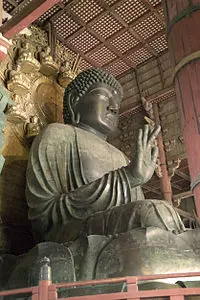
Vairocana-Buddha at Todaiji Temple
Its existence is the fundamental principle of the universe, the Hoshinbutsu, which transcends the historical Buddha Shakyamuni.
This Buddha is also called the “Eternal Buddha” in the Lotus Sutra.
The Dharma is literally the Dharma, and the Dharma is Existence itself.
Therefore, the laws that pervade the universe are also the very existence of the universe. This is the ultimate “absolute.
Therefore, we can say that GOD as a transcendent and absolute deity is equivalent to Mahavairocana Buddha in Buddhism.
Another important perspective is that of a ” Savior God. In Christian terms, this is ” Messianism.
In the time of Buddha Shakyamuni, the idea of a Savior Buddha did not appear in full force. Basically, it was a “self-help” philosophy.
However, with the rise of Mahayana Buddhism, Amida Buddha came into focus. Pure Land Buddhism.
I believe that this Pure Land Buddhism is a teaching in which the Christian messianic aspect is brought down from the Real World as a complement to Buddhism.
This idea of ” Saving Buddha,” combined with the “Absolute Buddha” mentioned earlier, has been the driving force behind the development of Buddhism into a world religion.
I believe that this idea can be a point of contact between Buddhism and Christianity in the future.
Especially in the Japanese Pure Land sect, Amitabha Buddha has moved from the position of being one Buddha among many Buddhas to the position of “the one and only absolute Buddha.
It is often pointed out in comparative religious studies that the thought of Shinran, the founder of Jodo Shinshu in Japan, is quite similar to that of Paul and Luther.
The theory and practice advocated by Shinran effectively brought to the fore the religious truth that all people, regardless of status, wealth, or nobility, are sinners before Amida Buddha, and that all people are equal before the Buddha.
This is almost a Christian idea, although it is called Buddhism. I will consider this point in another discussion.
Envious God and Compassionate Buddha
The Semitic monotheistic god is said to have a “judging and envious god” aspect.
In fact, I have never heard of a “Buddha who judges or envies”. So it still seems to be an argument that the Christian God and the Buddhist Buddha are different in kind.
What should we think about this point?
I believe that the understanding of God in Semitic monotheism is mixed with a different entity than the supreme God.
Is the “judging and envious God” sometimes found in the Old Testament really the “Heavenly Father” to whom Jesus pointed?
From the sense of reading the New Testament, you can sense from the Old Testament that there is quite a difference in the nature of God.
In the first place, “the one and only God who is also an envious God” is a contradiction.
If God is “envious,” then He assumes “other gods” at that point, right?
He said to them, “I am a jealous God. There is no god but I.” But by saying this, he was showing the angels that other gods do exist. For if there were no other God, who would he envy? (“Apocryphon of John”).
This “God who envies and judges” is not the supreme God, but the ethnic God of Judaism. There are two kinds of gods mixed in the Old Testament.
In Palestine, the Absolute God was originally called “El” or “Elohim.
This is the real Absolute God, and Yahweh (Yahweh) is considered to be the Jewish national deity.
For more information, please refer to the following article.
*Reference article. Yahweh and Elohim are Two Different Gods – Why It is Better to Distinguish between the Ethnic Gods and the Supreme God
In fact, even in biblical bibliography (higher criticism), there is said to be Yahweh material and Elohim material.
It means that the prophet’s qualities have caused him to receive the word of God differently from Elohim.
Because this “God who judges and envies” remains in the Old Testament, the idea of ” Holy Extermination” has been justified, which in turn has justified Western imperialism and colonial rule since the early modern period.
In the process of Christianity becoming a universal religion, it was better to separate this Jewish national deity, Yahweh.
In fact, Christian Gnosticism, which was considered “heretical,” had such a claim.
I believe that, at least in this respect, Gnosticism was justified. The above quote from the “Apocryphon of John” is a good illustration of this point.
Christology
Trinity and Buddhism Trikaya
Christianity takes the position of Trinitarianism in understanding God.
This is a doctrine that has historically evolved around how to position Jesus Christ.
In the Trinity, we believe that there is only one God, but with three personas. Persona means something like “mask” in the Latin context.
If God remains God, He will be beyond the reach of human comprehension. There will be no salvation.
Therefore, God became incarnate as “Christ the Son.” It means that mankind could thereby come to know God and be entrusted with God’s salvation.
Simply put, it is the understanding that God became man in the person of Jesus Christ.
On the other hand, there is a similar idea in Buddhism. That is the three-body theory(Trikaya).
- Dharmakāya (Dharma body) : The essence of the Buddha. The Dharma itself.
- Saṃbhogakāya, (Enjoyment (or Bliss) body) : The Buddha is said to have become a Buddha through ascetic practice
- Nirmāṇakāya, (Transformation (or Appearance) Body) : Buddha manifested on earth
In short, the manifestation of the Dharma body on earth is the Buddha, Shakyamuni Buddha.
If we apply the “transcendence-intrinsic” theory, the Enjoyment (or Bliss) body corresponds to the one and only God.
Therefore, it is possible to think of Sakyamuni as the incarnation of the One God (Enjoyment (or Bliss) body).
The Dharma body corresponds to God as essentia (essence).
Hence, the Trikaya theory is almost identical to the Christian trinity theory.
Incidentally, “The god of Christianity (or Semitic monotheism) is a personal god. The idea of a personal God is still confined within the framework of human imagination, and is still immature compared to the Buddhist idea of Dharma-body-Buddha as a “being of reason and law.
However, this idea stems from an understanding of the “Trinity” that is only at the surface level.
The “Absolute God” is considered to transcend personality before appearing as the persona “Father, Son, and Holy Spirit.
When the Absolute God as Essentia appears as a persona, or in Buddhist terms, as a Enjoyment (or Bliss) body or a Transformation (or Appearance) Body, he takes on a “personality” as a means of expression.
Patristic theory
It seems to be common knowledge that the founder of Christianity is Jesus Christ and the founder of Buddhism is Gautama Siddhartha (Gautama Buddha) or Sakyamuni Buddha, but these are actually not quite straight forward.
As has often been said, I believe that Jesus himself did not intend to start a new religion, but only to reform Judaism.
In the course of Judaism, the idea of waiting for the Messiah (Messianic thought) emerged, and he must have positioned himself as the “Messiah” in this context.
However, the content of Jesus’ teachings had a universality that transcended the boundaries of the Jewish people, as seen in the Parable of the Samaritan, for example.
It was Paul’s work, rather, that made the universality of this place blossom in a concrete way. This is why it is said that “Christianity was created by Paul.
On the other hand, what about Shakyamuni Buddha? In India, the very concept of “religion” or “sect” is different from that of Semitic monotheism.
In India, we say, “I believe in (something) called Dharma. In this case, ” Dharma” refers to a teaching or philosophy.
It is a way of saying, “I believe in the Dharma of Sakyamuni Buddha,” which, so to speak, might be nuanced to “I am a devotee of the philosophy of Sakyamuni Buddha.”
Therefore, even if it is true that Shakyamuni Buddha is the founder of Buddhism, it is difficult to say whether he himself had the idea of starting a “religion” or not.
In His early days, the Buddha Himself said, “I have discovered the Dharma that the ancient buddhas walked in.
However, whether it was Jesus or the Buddha, they may not have intended to create religion as a motive, but they certainly had authority in the words they spoke.
The people who heard him were amazed at the way he taught, for he wasn’t like the teachers of the Law; instead, he taught with authority.(Mark 1:22)

The Tarumon on the Mountain, painting by Karl Heinrich Bloch
I believe that the “authority” of Jesus and the Buddha derives from their original mission and spiritual rank. They share the commonality of being in a position to preach the fundamental law.
The Buddha and Jesus also have some curious similarities regarding some events in their lives.
First, the way they were born, that is.
It is a well-known story that Mother Mary was filled with the Holy Spirit and Jesus was born of virgin conception.
On the other hand, it is said that Queen Maya had a dream in which a white elephant entered her right side, and later Buddha was born from her right side.
It may be a story that was made up by later generations, though, because they thought that Jesus (Buddha) could not have been born in a normal way. Personally, I believe that there is no need for such a supernatural birth.
Then there is also a commonality right after birth.
To Jesus, the Three Eastern Doctors visited and worshipped him as the “King of the Jews.
To Shakyamuni, an Asita hermit came and saw Shakyamuni and prophesied that “He will become the Holy King of the Rolling Wheel or the Buddha.
When we hear the word Christ or Messiah, we think of a “religious messiah,” but Messiah originally meant anointed one, or “King of the Jews. It is the image of a religious leader and politician.
In that sense, it’s somewhat similar to the question, “Is it the Holy King of the Rolling Wheel or the Buddha?
Then there is the incident before Enlightenment.
Shakyamuni Buddha fights against demons (purpyas mala) and finally wins and attains enlightenment. This is called “descending from the demon and attaining enlightenment.
You have the story of Jesus, too, who fought off the “temptation of the devil” in the wilderness for 40 days and 40 nights.
Thus, there are similarities in the stories of “before and after awakening to the truth”.
It is possible to point out many other things, such as parables in the Bible that are similar to allegories in the Lotus Sutra. Anecdotes (miracles) such as walking on water are also common.
As you can see, there are many similarities, but the way of preaching and the way of educating disciples are quite different.
However, as is the theme of this paper, I think the “difference” is the difference in the way the one and only God (the fundamental Buddha) manifests himself, taking into account the characteristics of the times, region, ethnicity, etc., so I don’t think it is possible to say “different because different” in general.
We too would change the topic and the way we talk to children from adults. It is the same thing.
Theories of Human Nature
Theosis (Eastern Christian theology)and Buddha Nature Theory
It is said that there is a significant difference between Christianity and Buddhism in theories of human nature.
Unlike the Semitic monotheistic image of man, who is assumed to be absolutely separate from God, man in Buddhism is essentially identified with Buddha as a being that “possesses the Buddha nature.
In Buddhism, it is believed that through cultivation, a human being can approach Buddhahood. Moksha through wisdom and attainment of Nirvana.
On the other hand, although Christianity generally emphasizes “salvation through Grace,” in fact, the idea of “becoming God based on wisdom” originally existed in primitive Christianity as well.
Gnosticism,” as mentioned above, believed that “man is capable of manifesting his divinity through gnosis.
In this respect, too, the theory of man has become much narrower, as Gnosticism has been deemed totally heretical.
However, there are non-Gnostic theologians who have thought along similar lines.
God became man that man might become God (Athanasios of Alexandria).
This word is hard to interpret as orthodox Christianity, but it makes clear sense if understood in a Gnostic way.
“The reason Jesus appeared (incarnated) on earth was so that men, enlightened by His teachings, would be able to draw near to God.
This point has been passed on (albeit in a limited sense) to the Eastern Orthodox Churches (Greek Orthodox, Russian Orthodox, etc.), not to Catholics or Protestants.
This is the so-called “idea of Theosis.
In the Eastern Orthodox Church, however, the understanding of ” Theosis” is “to be able to partake of the divine nature.
The scripture in 2 Peter 1:4 is the direct basis for this.
In this way he has given us the very great and precious gifts he promised, so that by means of these gifts you may escape from the destructive lust that is in the world, and may come to share the divine nature. (2 Peter 1:4)
It is only with this idea of “Theosis” and Christian Gnosticism, which is a further radical development of this idea, that we can truly understand the meaning of the following scripture.
You must be perfect — just as your Father in heaven is perfect! (Matthew 5:48)
Clearly, Jesus’ words, “You must be perfect” presuppose that human beings have the predisposition to approach perfection, that is, that they are beings who possess the divine nature and are capable of blossoming into divinity.
Mix in Gnosticism, and the Acts of Jesus approaches perfection
Christian Gnosticism was a more obvious advocate of such ideas of divinity.
Jesus said, “I am not your teacher. For he drank from the spring from which I measured and became intoxicated. Whoever drinks from my mouth will be like me. And I will be like him. And what was hidden will appear to him. (from the Gospel of Thomas) *translated by Syou Takada
Historically, Gnosticism has been dismissed as heresy, but I believe that Gnosticism originally reflected the ideas of Jesus.
To extend the above-mentioned theory of “transcendence and immanence,” “Johnine faith/transcendence” and “Thomasian enlightenment/immanence” can be synthesized even though they seem to contradict each other at first glance.
To put it in the extreme, the synthesis of orthodoxy and Gnosticism can restore the original teachings of Jesus in a more nearly complete form.
In addition, the idea of manifesting divinity through gnosis (i.e., recognition, awareness) becomes consistent with Buddhist thought.
Method of Practice
In Christianity, God and man are depicted as absolutely separate entities.
The general understanding is that there is an essential difference between humans, angels, and God, and that humans cannot become angels or God no matter how hard they try.
However, as mentioned above, if we adopt the idea of Theosis or Gnosticism, it would mean that human beings have a divine nature and can develop it.
In this way, it can be understood that, in essence, it is not so different from the Buddhist theory of Buddha Nature.
Then God said, “And now we will make human beings; they will be like us and resemble us. (Genesis 1:26)
I think this scripture should be understood not as “physically conformed,” but as conformed in essentialism.
If God were to be physically represented, it would mean that God is a physical, object-like being, which would conflict with God’s omnipotence, since form is a limited thing.
“Method of practice” is a Christian theory of monasticism.
In the first place, the very existence of the idea and practice of monasticism in Christianity is premised on the idea that “human beings can approach God.
In the monastery, there is an attempt to practice and perfect the three virtues of chastity, poverty, and obedience, isn’t there?
Dialectics of Wisdom
Now, though, there is no doubt that what is required of believers in Christianity is, if anything, the practice of “love of neighbor.
Love of neighbor, so to speak, is a horizontal love, and as a coordinate axis, it is a ” side-axis” practice.
In Buddhism, on the other hand, the emphasis is on bodhicitta, “seeking enlightenment without limit,” although it also preaches the importance of donation.
This is the “vertical axis” of practice.
Thus, the challenge imposed on Neo Buddhism is how to synthesize the horizontal love of Christianity and the vertical enlightenment of Buddhism.
In this section, we will consider the Buddhist theory of the stages of wisdom. There are several patterns of wisdom stages, but the one we will focus on here is “Wisdom of Equanimity(Equanimity Wisdom).
First, there is the “Equal Wisdom” stage.
This is literally a state of mind where people can recognize and love one another as equals. This can be succinctly described as a “heavenly state of mind.
Christian love of neighbor (in terms of love) is also recommended for this state of mind.
Next comes the “Discriminative Wisdom” phase.
Discriminatory Wisdom is also a way of looking at things, literally, that there are ups and downs in people’s state of mind. This is a feeling that inevitably arises in the process of developing wisdom.
When we acquire intelligence, we enter a stage where we become very concerned about the “distinction between self and others.
They become concerned about various differences in comparison with others, such as whether they are “good enough” or “not good enough,” “excellent or not excellent,” and so on.
Or it can also manifest itself in the form of “comparison between the ideal self and the present self.
This stage of Discriminatory Wisdom is a stage of joy that is not found in equal wisdom in the sense that excellence is being demonstrated, and at the same time, it is a stage of suffering in the face of relative comparisons.
I am sure this is familiar to all of you reading this article right now. Discriminatory Wisdom is a stage of intelligence that inevitably accompanies the desire to “self-actualize”.
However, after experiencing joy, suffering, and various ups and downs in life, there comes a point in time when one begins to feel a kind of ” pathos.
Of course there are stages of excellence and self-exertion, but that is as it should be, and one comes to have a bird’s eye view of things, such as, “All people are happy, sad, and sometimes hurt each other in their attempts to realize the self.
This is the stage of “Equanimity Wisdom.
While recognizing discrimination as discrimination, at the same time, a new sense of equality emerges: “We are all equal in the sense that we are all happy and sad,” and “We are all trying our best to be happy.
Equality Wisdom is a stage of wisdom that is a stage up from the initial Equal Wisdom, in the sense that one can observe things with Equal Wisdom while still including Discriminatory Wisdom within it.
In this way, ” Equality Wisdom” is the state of being where the seemingly contradictory concepts of ” Equal Wisdom – Discriminatory Wisdom” are synthesized.
This stage of the manifestation of intelligence is what Neo Buddhism calls the ” Dialectic of Wisdom.
And when Equality Wisdom reaches the average as a state of mind, that is, the “Bodhisattva state of mind.
To put it roughly, in terms of the Ten Realms Theory, the correspondences are as follows.
- Human Realm: Equal Wisdom
- Celestial Realm: Discriminative Wisdom
- Bodhisattva Realm: Equality Wisdom
In equality wisdom, wisdom and love (agape) are synthesized.
This is also the state of mind that synthesizes Buddhism, the religion of wisdom, and Christianity, the religion of Love.
Thus, as a monastic theory that synthesizes Buddhism and Christianity, I would like to propose a basic theory called “Dialectic of Wisdom.
Selfless Love (anattā-Agape)
The word “selflessness” has a Buddhist ring to it. Agape” is a central teaching in Christianity.
Selflessness, also known as ” Non-Self,” is one of the Three Dharma Marks of Buddhism. Simply put, it is a philosophy of relationship.
It is the thought that “all phenomena cannot exist by themselves, but exist as a phenomenon that comes together.
It is “Selflessness” because there is nothing that cannot exist by itself, nothing that has a nature of its own.
This philosophy of relationship, when understood more positively, turns into the philosophy of love, “We exist by supporting each other. Therefore, we should love each other.
Also, letting go of the ego-centered worldview and converting to a God-centered worldview is indeed ” Selflessness,” and such a God-centered worldview is the very essence of Christian theism.
Here, Buddhist Selflessness and Christian love are synthesized, completing the monastic theory of ” Selfless Love((anattā-Agape).
In the above, this paper has attempted to synthesize Christianity and Buddhism.
It is the contention of this paper that Christian “Transcendence/Faith” and Buddhist “Immanence/Enlightenment” are compatible.
However, if we look at Gnosticism in Christianity, the idea of “Immanence/Enlightenment” was originally there. Jesus was preaching that as well.
There are many more topics I would like to discuss, such as ” Eschatology,” but I would like to add to this list each time.


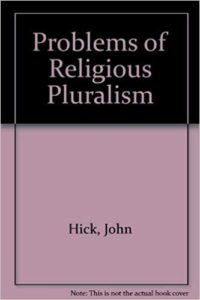

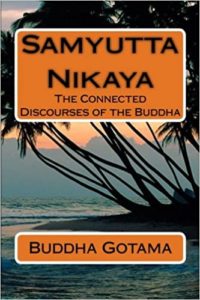
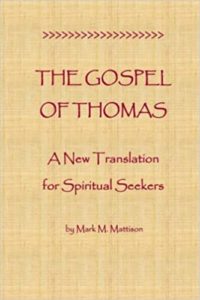
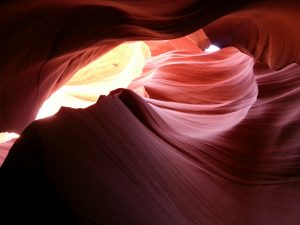

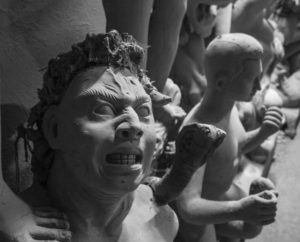
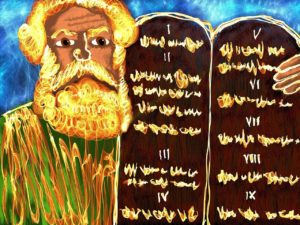

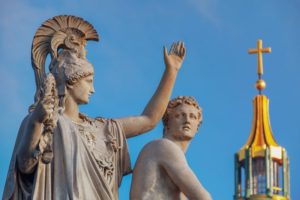

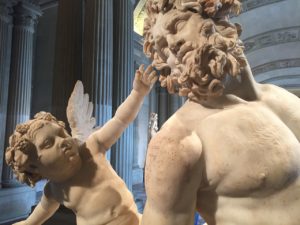
Comments